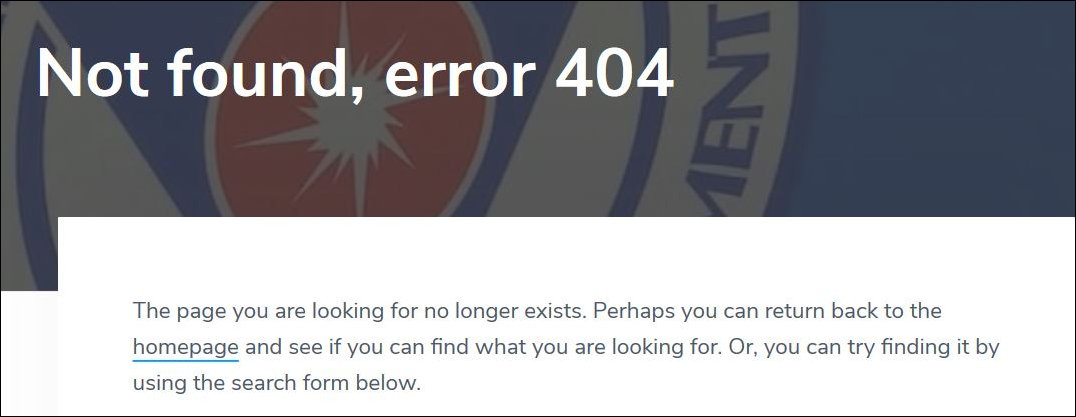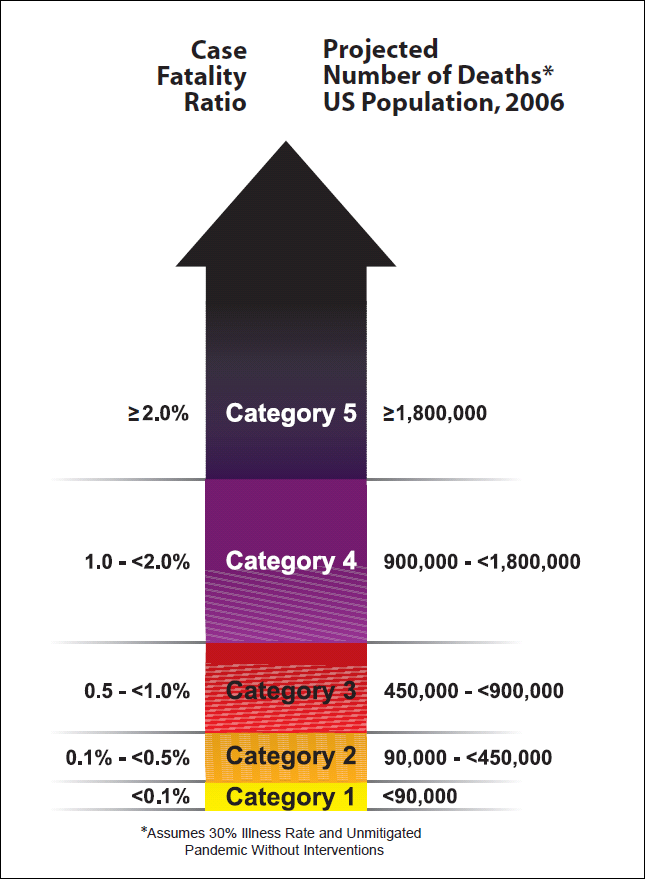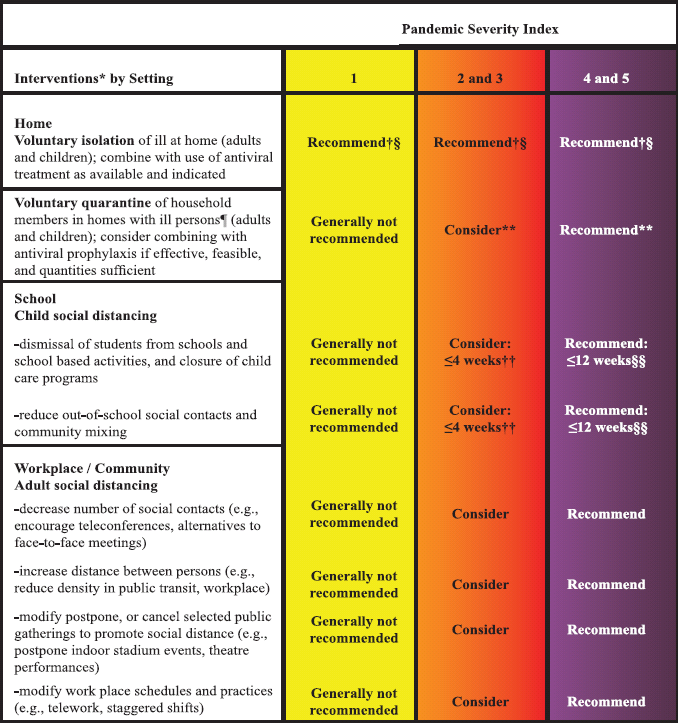I have published criticisms of the Northam administration’s handling of COVID-19 crisis not to embarrass the administration but to inform it and recommend how it might improve. But I find the administration’s action in removing from public view the main source of that embarrassment — “the page you are looking for no longer exists”[1] — to be profoundly unethical.
Health Commissioner M. Norman Oliver said in an interview yesterday, “Department and emergency services personnel throughout the state ran through a scenario in May 2019, looking at what would happen if a pandemic caused tens of thousands of deaths. They looked at everything from how to treat people to where to put the bodies.”
He did not say how rigorous the “run through of the scenario” was, if he or the Secretary or the Governor participated, whether the participants learned anything, or whether they took any action based on those lessons learned. But we know exactly what the scenario was, because the Virginia Department of Health got it from FEMA. (The national assumptions for such a scenario are below.)
Oliver also did not mention the Virginia Pandemic Response Annex #4 to the Virginia Emergency Operations Plan. That plan was remarkably prescient about the arrival and effects of pandemic influenza. It was built on the FEMA template which you can see here. The Virginia annex modeled it exactly. It discussed such things as state responsibility to stockpile supplies in case of such an epidemic.
In a related development, the Emergency Operations Plan has been removed from the Virginia.gov website[2] from which I have repeatedly referenced it in my writings.
Fortunately Rockbridge County, the City of Buena Vista and the City of Lexington apparently did not get the memo, because their Pandemic Influenza Annex, linked to that of the State, is still online[3] at this writing. It is a terrific plan, but depends upon the state holding up its end of the relationship.
So, I will share with you the nationwide planning assumptions so that you can judge their accuracy in predicting COVID-19.
National Strategy for Influenza Implementation
“Planning Assumptions (Sample text)[4]
- Susceptibility to the pandemic influenza virus will be universal.
- Efficient and sustained person-to-person transmission signals an imminent pandemic.
- The clinical disease attack rate will likely be 30% or higher in the overall population during the pandemic. Illness rates will be highest among school-aged children (about 40%) and decline with age. Among working adults, an average of 20% will become ill during a community outbreak. Some persons will become infected but not develop clinically significant symptoms. Asymptomatic or minimally symptomatic individuals can transmit infection and develop immunity to subsequent infection.
- Of those who become ill with influenza, 50% will seek outpatient medical care. With the availability of effective antiviral drugs for treatment, this proportion may be higher in the next pandemic.
- The number of hospitalizations and deaths will depend on the virulence of the pandemic virus. Estimates differ about 10-fold between more and less severe scenarios. Two scenarios are presented based on extrapolation of past pandemic experience. Planning should include the more severe scenario. Risk groups for severe and fatal infection cannot be predicted with certainty but are likely to include infants, the elderly, pregnant women, and persons with chronic medical conditions.
- Rates of absenteeism will depend on the severity of the pandemic. In a severe pandemic, absenteeism attributable to illness, the need to care for ill family members, and fear of infection may reach 40% during the peak weeks of a community outbreak, with lower rates of absenteeism during the weeks before and after the peak. Certain public health measures (closing organizations, quarantining household contacts of infected individuals, “snow days”) are likely to increase rates of absenteeism.
- The typical incubation period (interval between infection and onset of symptoms) for influenza is approximately two days.
- Persons who become ill may shed virus and can transmit infection for up to one day before the onset of symptoms. Viral shedding and the risk of transmission will be greatest during the first two days of illness. Children usually shed the greatest amount of virus and therefore are likely to post the greatest risk for transmission.
- On average, infected persons will transmit infection to approximately two other people.
- A pandemic outbreak in any given community will last about six to eight weeks for each wave of the pandemic.
- Multiple waves (periods during which community outbreaks occur across the country) of illness could occur with each wave lasting two-three months. Historically, the largest waves have occurred in the fall and winter, but the seasonality of a pandemic cannot be predicted with certainty.
- The stages of the pandemic should occur sequentially, though, they may overlap or occur so rapidly as to appear to be occurring simultaneously or being skipped.”
Planning Guidance and Projections for State and Local Governments and Private Businesses
The Community Strategy for Pandemic Influenza Mitigation can be found here.
HHS and CDC developed interim planning guidance with regard to the application and timing of non-pharmaceutical interventions for states and local governments in February 2007 (and it was updated in 2012). This guidance supports the development and implementation of a community’s overall mitigation strategy that includes both pharmaceutical and non-pharmaceutical measures, in the context of a Pandemic Severity Index. The Pandemic Severity Index (PSI) provides a framework that integrates the types of partially effective non-pharmaceutical interventions with suggested implementation and duration times in an attempt to maximize the overall benefit to the community, while minimizing the potential cascading consequences of implementing recommended interventions.
The PSI uses a case fatality ratio as the critical factor in categorizing the severity of a pandemic. This tool was designed to serve as a guide in discussions with schools, colleges and universities, and other community sectors and support the timely development and implementation of an effective local, regional, and state strategy in the context of an estimated level of severity.
The guidance recognizes that the connectedness of communities goes beyond spatial proximity to include ease, speed, and volume of travel between geopolitical jurisdictions. To balance the relationship of connectedness and optimal timing, the guidance proposes that the geopolitical trigger be defined as the cluster of cases occurring within a U.S. state or proximate epidemiological region which spans beyond a state’s boundary.”[5]
From the charts below, which FEMA and HHS included in the guidance for states and localities, you can see that Category 5 worst case projections without mitigation anticipated more than 1.8 million deaths nationally.
Current projections are in Category 2. If you look at the charts below, you will see that at federal urging state governments are implementing Category 4 and 5 recommendations to keep the pandemic outcomes at Category 2 levels.
Federal responses have a much wider range of options than the state and local ones. National level actions included in January banning travel from China before any of these state and local actions kicked in. But in our system of government, the President cannot mandate state and local actions, only recommend. Governors can order them, and they have, at varying degrees of severity of restrictions.
If you have watched the daily presidential press conferences that display the world-class talent at work on the problems 20 hours a day, it is impossible not to be impressed. But the federal government does not have state responsibilities including last-mile logistics. The President has recommended the governors use National Guard transport for distribution when commercial transportation is too slow or not available.
Governor Northam and his administration needs to get better help and may have access to it at MITRE, as recommended in this space. But taking down the pre-existing state planning document is a scandal. I do not know who ordered that action, but the Governor must find out and fire him or her publicly to send a message to both his administration and the people of Virginia about transparency and ethics.
https://www.vaemergency.gov/wp-content/uploads/drupal/COVEOP_2012_HSA_4_Pandemic_Influenza_Response.pdf
[2] ibid.
[3] http://www.rockbridgecountyva.gov/DocumentCenter/View/49/Pan-Flu-Annex
[4] https://www.fema.gov/pdf/about/org/ncp/pandemic_influenza.pdf
[5] http://www.rockbridgecountyva.gov/DocumentCenter/View/49/Pan-Flu-Annex – modeled from https://www.fema.gov/pdf/about/org/ncp/pandemic_influenza.pdf




Leave a Reply
You must be logged in to post a comment.